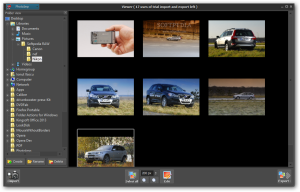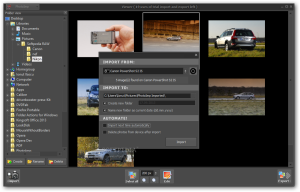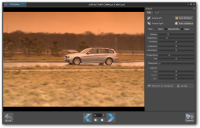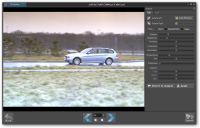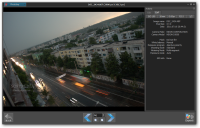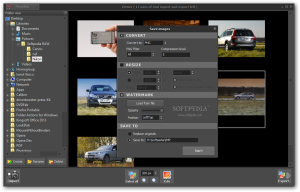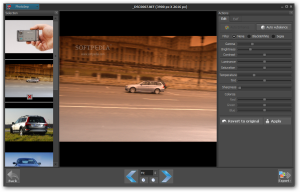Photo management applications are all over the place but few solutions can also provide a comfortable environment that is not daunting for less experienced users. Not to mention that nowadays options for processing raw data are also required.
PhotoImp is a photo management and processing software created with the novice user in mind. It assists you from importing the pics from the camera through making the right adjustments and saving them on the disk.
The application is not free of charge. The developer set a price of $28.50 / 23.52 EUR, VAT not included. There is the possibility to try it free of charge, limited to 20 image import and export operations.
Getting PhotoImp on the system is an easy task. The entire process was uneventful in our case and we only stopped to check on the additional tasks the program can perform.
These include enabling its agent so that cameras and SD cards are detected automatically and to associate supported files with PhotoImp; and there is a wide range of them. Apart from popular formats like JPG, TIFF, GIF, BMP and PNG, the program also supports RAW types (Canon, Nikon, Sony, Pentax, Olympus, Panasonic, Leica and Samsung) and Adobe’s PSD format.
Once launched, a simple, dark layout shows a folder view in the left-hand side of the application window and the picture content of the selected folder in the right. All images are presented as thumbnails and can be easily sent to the editing section of the program; this can be achieved either from the context menu or by using the “Edit” button in the lower part of the screen.
Import and export functions are available in the bottom left and right corner respectively. In our case, PhotoImp was accurate in detecting the camera make and model we connected to the test computer and offered to save the images in a newly created folder named with the current date.
There is the possibility to give a different name to the folder and to set a location of your choice for storing the files. Furthermore, PhotoImp can automatically delete the photos from the device after import operation completes; no special measures are taken to securely erase the content.
Editing options are limited to the functions required to enhance images, not to completely alter a picture. The options at hand can help with adjusting gamma, brightness and contrast levels, finding the right values for luminance and saturation or tweaking the temperature, tint and sharpness.
All changes are reflected immediately in the image, so you can check their effect on the spot.
On the downside, none of the aforementioned adjustments are marked with notches in the interface, which would give the user some indication about the tweak level; however, this detail is available as a tooltip, when hovering the mouse over the slider.
Some automatic functions are also available and you can rely on PhotoImp’s algorithm to automatically enhance a given photo or to adjust the white balance. Additionally, two filters, black & white and sepia, can also be applied.
Where available, PhotoImp can display the Exif data for the selected picture. The details include the date when the image was taken, make and model of the camera, type of white balance, shooting more, exposure program and mode, GPS info and even if the flash was used or not.
Multiple images can be added to the edit section and you can work on the whole batch by applying the same settings. A vertical film strip in the left lets you move from one item to another and check on the result; the thumbnails cannot act as preview.
However, we noticed that auto-enhance and auto white balance do not work properly in batch editing mode because they apply only to the currently opened image, not the entire lot.
The menu for exporting the images provides the possibility to convert the file to a different format, scaling the output or applying an image watermark.
Conversion can be done to PNG, JPEG, GIF, TIFF or PSD and for almost all of these choices there are some parameters you can play with: compression level, general quality, smoothness, transparent color or filters.
The options for watermarking the result(s) are simple and limited to selecting the watermark file, adjusting its opacity and choosing one of the preset locations: top left/right, bottom left/right or smack in the center.
PhotoImp is clearly aimed at the average user with an incipient passion for photography. It does not abound in options or menus and offers the right range of levers to adjust RAW images properly.
The Good
It offers a small but efficient array of adjustments to achieve the right image quality. All adjustments can be viewed on the spot.
The Bad
Automatic adjustments are not applied on all images when editing in batch mode.
The Truth
If Adobe Lightroom is the perfect assistant for the professional photographer, then PhotoImp can be considered a very handy companion for the amateur.
 14 DAY TRIAL //
14 DAY TRIAL // 